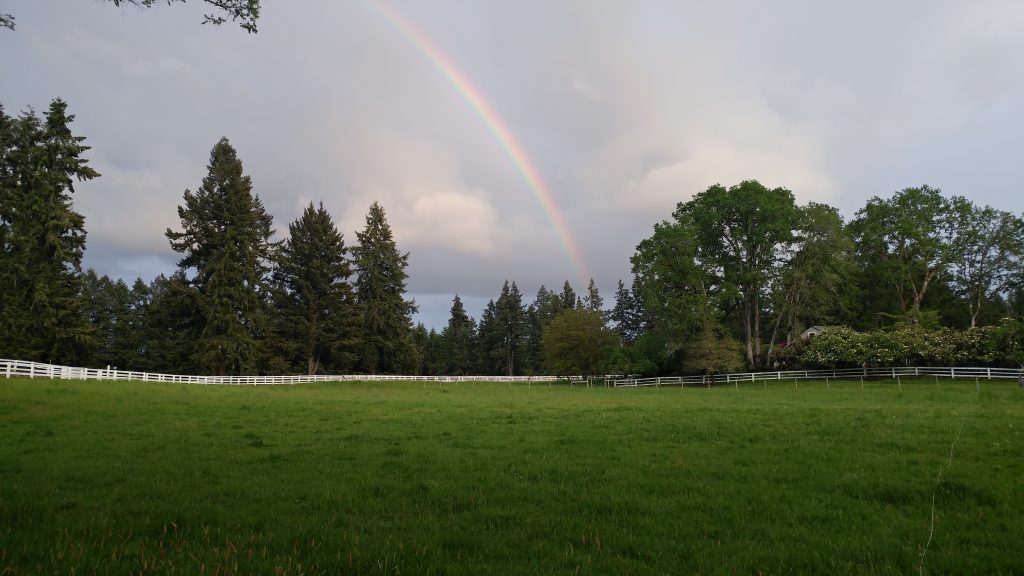
Four years ago we moved to the family farm (where I grew up) and we’ve enjoyed restoring the 1 acre landscape around the farmhouse. Given that the residential part of this farm is surrounded by pastureland, there is a continual influx of weed seeds into our managed beds. While our thick applications of arborist wood chips have kept out many weeds, they still pop up where mulch hasn’t been applied yet or is too thin.

One of these weeds is Hypericum perforatum (also known as Klamath weed or St. John’s wort), a species native to Eurasia. The latter common name can confuse gardeners, as there are several ornamental species of Hypericum also called St. John’s wort, but H. perforatum is easily identified by the perforations in the leaf. This invasive species is a problem for our cattle, as Klamath weed causes photosensitivity when it’s consumed and can be toxic in large amounts.

In the last few years H. perforatum colonized our stockpile of native soil waiting to be used in our raised beds. It was a small enough infestation that we could pull it all up, but a closer look revealed that some shiny metallic beetles were already busy feasting on the leaves. Putting on my IPM hat, I first needed to identify these interesting beetles. It didn’t take long to find out they were a Chrysolina species.
Chrysolina hyperici and C. quadrigemina (or St. John’s wort beetles) are also native to Eurasia and are specialist feeders – they only feed on Hypericum species. They were imported as biological control agents several decades ago and have been effective in controlling dense populations of St. John’s wort. C. quadrigemina in particular has been reported to feed on both ornamental and native species of Hypericum but not to the extent of causing significant damage.

Hypericum perforatum flower 
Ornamental Hypericum flower 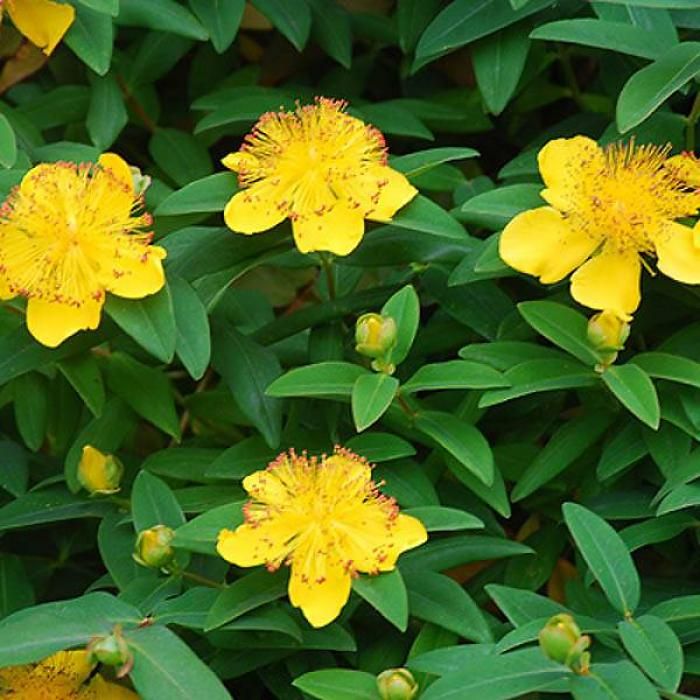
Ornamental Hypericum shrub
Both species of the St. John’s wort beetle feed on the leaves, where they also lay thousands of eggs. The larvae that emerge from the eggs are voracious feeders and can defoliate dense stands of St. John’s wort. Like other animals that eat Hypericum perforatum, the larvae become photosensitive and generally feed before sunrise to avoid damage.

Since biological control agents depend on the presence of their host, it’s important to retain a small population of the host. And because this particular beetle is a leaf feeder, one can remove the flowers of the plants to reduce reproduction, but maintain the plants to support the beetle.

Many other introduced, invasive weeds can be controlled using carefully researched microbes and insects. Some of these biocontrol agents may already be found in your area – so it’s important to avoid using insecticides and fungicides, in particular, to conserve these garden assets.
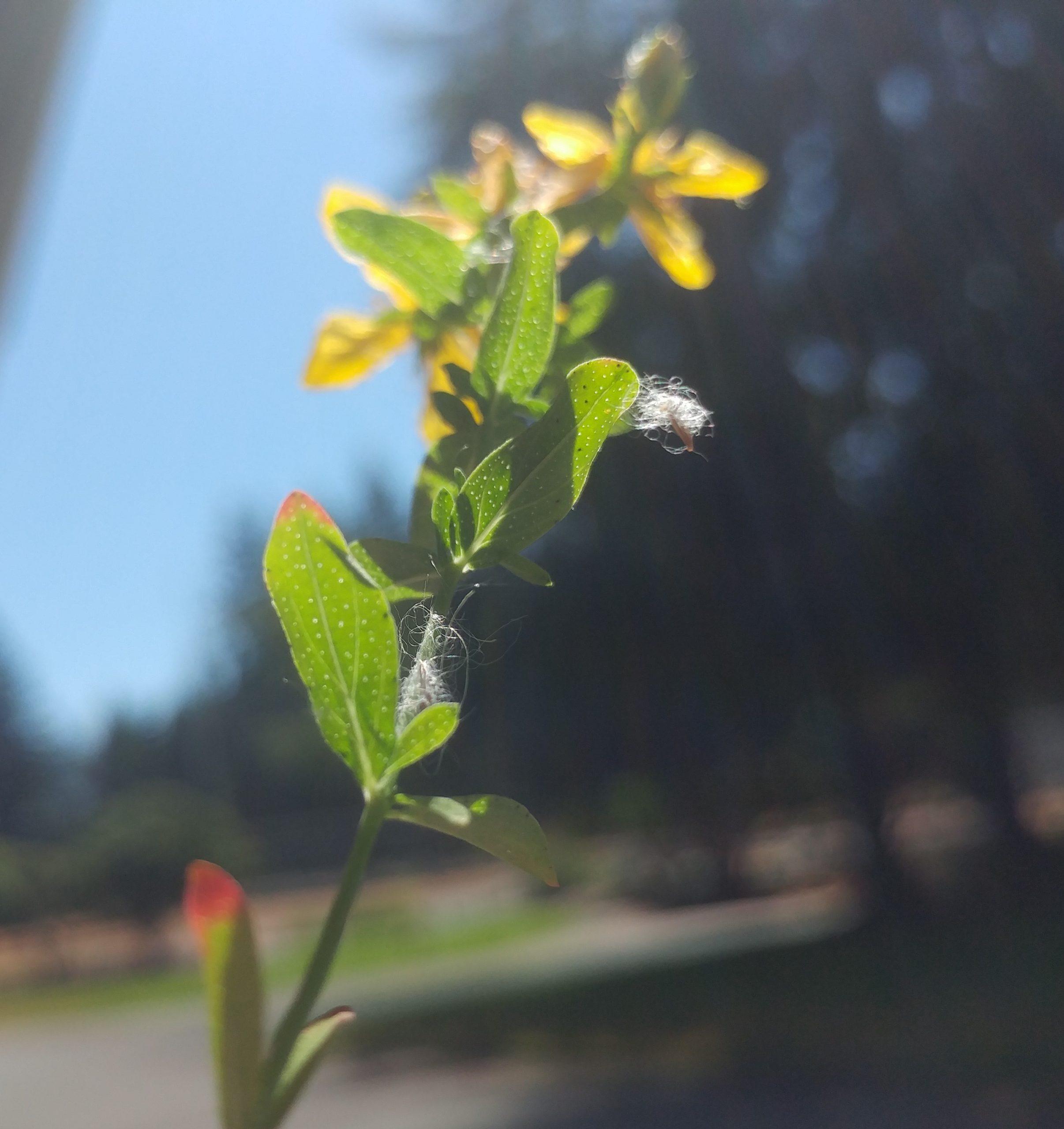

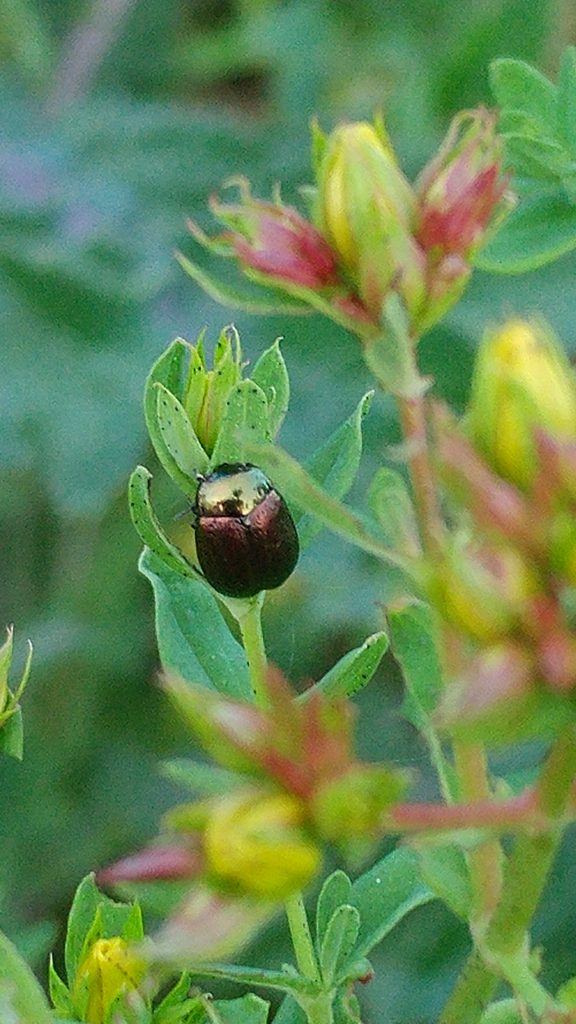
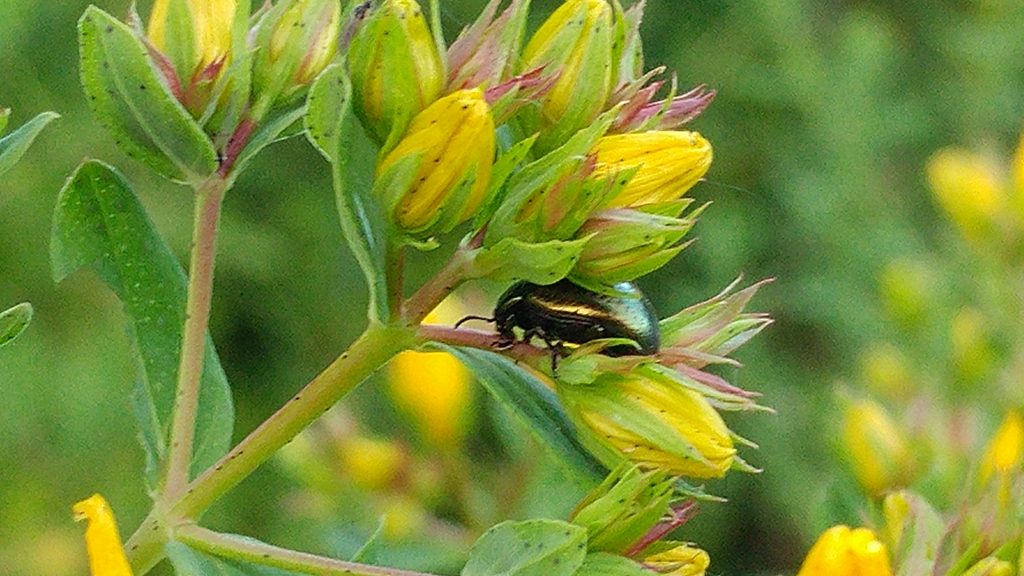
Glad to see the increasing awareness that there are problems created with non-native plants. I wish more of us were farmers or had deep experience with “face-to-soil” and decades of dirty fingernails. They would tell us to mow our roadsides more often to protect our natural areas, lol.
But promoting the addition of more non-native species to an already beleaguered ecology (especially highly mobile insects) often causes more problems than it solves (especially when the study of potential external impacts is limited by grant funding and who is controlling the purse strings.
Many of the original introductions of invasive species were made with the best of intentions (a shocking amount introduced purely for our aesthetic entertainment). In my lifetime, living in a remote rural area, I now see whole areas that used to support migrating animals that now, botanically, might as well be in Eurasia. I see pollinators mobbing these new plants, potentiating their reproduction and (because of opportunity cost) resulting in decline of traditionally co-evolved native plants which support vast numbers of species beyond the pollinators themselves.
Scientists looking for quick “easy” solutions are still adding MORE introduced species to the biological stew we are making. When birds are leaving their nesting ranges malnourished and dying mid-migration, unable to cope with adverse events, as happened last fall in the mid-west are warnings of what is coming.
There are numerous examples of where introduced species for biocontrol have created additional issues and these species themselves became invasive species. The Chinese lady beetle, and mantis that we all felt good about releasing into our gardens in the ’80s are spreading and coming out of what is called “lag period”…a period of time where everything looks fine but the species is quietly building its numbers and genetically adapting to an environment out of its ecology without predators. One is invading houses in large numbers, the other is cultivating its taste for humming birds and every other native species it can grab…with the people who think it is “cute” vigorously defending it.
There are potential serious issues here, and eventually, we might be importing tertiary predators for those species, lol. It is too bad we routinely overlook the need to understand the need to act to protect our local evolved unique ecologies as a priority. We must be willing to do so as active stewards willing to work hard without looking for easy solutions and further complicating the biological issues.
The cumulative impact of ALL of these introductions is the problem. The problem is that we increasingly create unpredictable ecologic relationships that will increasingly impact our own ability to raise food, discover productive uses for our biodiverse plant world, or have an ecology that supports wild species. I look every day at dead forests from an imported insect, and an overly successful native one a result of poor human land management. I walk along roads looking for native plants, that used to be full of birds in the fall feeding on them for the journey south. Now we have numerous clovers and other nitrogen fixers changing the soil chemistry, making the soil more to their liking and eliminating the aster and goldenrod competitors in the process. Most of our remaining trees are facing serious exotic pests. The well organized (and quite beautiful) niched plant assemblages are falling before a jumble, to which I see new plants arriving every single year…including the one you mention…all along the road, was not here 5 years ago. It is all beginning to look like an abandoned city lot. This awareness comes from having learned most of the plants in my local area, and researched their origins. We have a huge problem, that will not be solved by simply bringing in more species. We can study them all we want, but once they are “out there” things we did not think of happen.
Unfortunately our current science methodologies are not good at evaluating problems caused by multiple variables. Experimental design that requires the elimination of all variables against a control does not begin to approximate the real world complex interactions and so we are making decisions like blind people around an elephant. We are still gathering clues and arguing about them, seeing ourselves as the controllers of nature while the snowball is well down the slope.
Hi –
There are a number of misconceptions in your comment that should be clarified:
1) This post is not discussing the addition of more nonnative species. These biological control agents are already here, feeding upon an introduced, invasive, and noxious weed that injures ANY animal that feeds upon it. Overall, biological control is much less disruptive on systems than pulling weeds (which destroys soil structure) or using chemical herbicides (which always have collateral damage as they don’t target a specific test).
2) The damage caused to ecosystems by not using biological control organisms to address serious weed problems is far greater than any collateral damage being caused by these agents. That’s why I linked the paper from New Zealand in the post. It’s worth reading to get a grasp on the costs and benefits of this particular beetle, at least in New Zealand.
3) Biological control organisms are only released after exhaustive laboratory research (not in field conditions, where escape would be possible) to assess potential and actual collateral damage as well as efficacy in reducing the pest. Again, the assessment of costs and benefits is made before release is permitted.
4) The introduction of new plants is entirely driven by demand, usually by gardeners and those retail outlets that benefit from selling them. (It’s worth noting that the purported medical benefits of St. John’s wort has resulted in huge commercial growing activities.) There is little commercial regulation, and with seeds now being sold through the internet globally, the cat is really out of the bag. And trying to regulate what people can and can’t grow in their gardens is a nonstarter, especially if they are not identified as invasive species.
5) Nature is not static. It’s dynamic. We already know the folly of trying to prevent forest fires, rather than understanding they are part of a cycle.
6) In general, when one measures species and diversity richness in a system, those systems that have a mixure of native and introduced, NONINVASIVE plants, have higher biodiversity than those that are composed primarily of native plants. This has been well-established in the literature.
7) Finally, the concept of native/nonnative is really not based on science, especially ecological physiology. All one needs to do is watch the northward spread of native species into new areas, where they were not found before. Are they invasive species, because they weren’t here before European settlers arrived? Of course not. Plant populations migrate as environmental conditions change, especially as cold hardiness zones change. And they don’t care about geopolitical boundaries.
You write: “In general, when one measures species and diversity richness in a system, those systems that have a mixture of native and introduced, NONINVASIVE plants, have higher biodiversity than those that are composed primarily of native plants. This has been well-established in the literature.” I am interested in knowing more about this. Could you provide a list of citations related to this topic? Thank-you.
Sure – you can read my published literature review on this topic: https://www.researchgate.net/publication/281751812_Nonnative_noninvasive_woody_species_can_enhance_urban_landscape_biodiversity?_sg=7sB67zrCUK-OOlwS1LutGkPYIgTRiiX7q0dKvEE3YG-CyVabS6YyfcHErRWPt7nsNCTwZQfoizT97I3Wfs-yH0wO6RyZ_HKfBhT80VSC.uZLEeQ6AB2kFqP-OGfkLQ0ROFSFFjnzk0muAFlNMIbfAS2wNyC0XfnVLlPnRACNYj2aYBPy6ZLk–BquC9rw0w